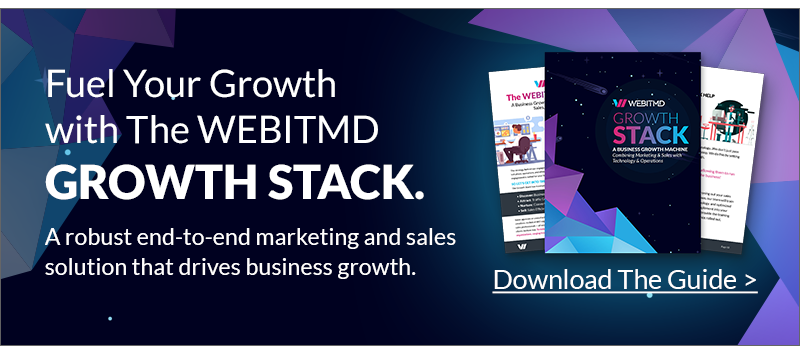So you’ve got tons of traffic coming to your site and visitors are filling out forms and entering your system. What are you going to do with all these incoming leads? How does all this activity translate into more business?
The answer is to set up one or more lead nurturing campaigns. This means creating a system of touch points that allows you to effortlessly move contacts through the sales funnel and prepare them to make a purchase before they reach your sales team.
So how do you create an effective lead nurturing that will compete with the best of them? Here are some tips for success.
Segment Your Audience
One of the biggest mistakes we see so many companies making is that they try to market to their entire audience as if all of their customers were the same person. This is inherently false and will surely produce lackluster results.
Each and every lead nurturing campaign should be built around a specific buyer persona for enabling audience targeting. This means identifying a particular audience segment and really defining what their pain points are. Once you understand what their problems and goals are, it will be much easier to develop content that resonates with that particular audience segment.
Have a Specific Goal in Mind
This is really important and, frankly, we come across a lot of businesses that don’t quite get it. Before you begin building out a lead nurturing campaign, you need to understand what your exact goal is.
The goal of your lead nurturing campaign shouldn’t be sales driven; you don’t want to push top or mid-funnel contacts to “buy now.” Instead, you want to push them to take the next step in the buying process which could be as simple as subscribing to your blog or requesting a free sample.
Furthermore, each and every email you send should serve a specific purpose, as well. If your audience isn’t sure why you are reaching out to them – or if they are suspicious about your intent – you will probably lose that contact.
Establish a Timeline
Your business has a specific buying cycle (the length of time from when a contact enters your system to when they become a customer) that should be acknowledged when you create your lead nurturing campaign. For example, if your buying cycle is 30 days, you would want to send emails out 1, 10, and 20 days after the initial conversion.
Keep in mind that proper lead nurturing requires patience and strategy. You don’t want to just send out emails at random intervals so you can meet your monthly sales quota. You also don’t want to send out too many or too few emails, either. There is no secret formula and it will probably take some trial and error before you get it right, but remember – Rome wasn’t built in a day.
Provide The Right Content and the Right Time
Keep in mind that proper lead nurturing requires patience and strategy; it’s about sending the right content at the right time. This makes it important to consider your potential customers’ needs and respect the buying process instead of rushing the sale by sending multiple emails about limited-time offers and why your brand is the best.
If your contact is at the top of the funnel, they are probably looking for educational materials to learn more about the problem they are experiencing and why it needs to be fixed. For mid-funnel contacts, you’ll want to educate them on possible solutions and point them in the right direction, even if the best solution is not your own product or service.
By directing bad leads away from you and bringing the good ones closer, you can increase the likelihood of closing these customers when they are ready to buy and allow your sales team to become more efficient.
Analyze and Optimize
This is an important part of any inbound marketing campaign. If you aren’t measuring your results, how do you know if things are going well or not?
Allow your lead nurturing campaign to run for 2 – 3 months before making any assumptions. Look at metrics such as open rates, click rates, and goal conversion rates to understand how contacts are reacting to your marketing. If open rates are low, you might want to tweak your subject lines or email cadence. If click rates and conversion rates are low, you might want to rethink your CTAs and, possibly, your overall lead nurturing strategy.
Nurture Your Leads Like a Growth Marketing Pro
As you can see, setting up an effective lead nurturing campaign requires a thorough understanding of your buyers, their journey, and where exactly your solution fits in to the larger picture.
If you are having trouble mastering the concept – or just simply don’t have the time to get this deep in the weeds – there are lots of growth marketing agencies out there who specialize in lead nurturing and sales enablement, so don’t be afraid to ask for help.
Were These Inbound Marketing Tips Helpful?
If you found value in this article we invite you to learn how inbound marketing works with other strategies to help convert more leads into buyers. Simply download this FREE guide on the WEBITMD Growth Stack, and see how the model aligns with your business needs? Got questions? Give us a call and let’s talk about your goals!


.jpg)





.jpg)



.jpg)





![5 Reports to Elevate Your HubSpot Sales Dashboard [+ Examples]](https://blog.webitmd.com/hs-fs/hubfs/Imported_Blog_Media/6-winning-examples-of-a-hubspot-sales-dashboard-2.png?width=767&name=6-winning-examples-of-a-hubspot-sales-dashboard-2.png)